Insights into the Updated Disability (Access to Premises – Buildings) Amendment (2024 Measures No. 1) Standards 2024
Introduction
At Vallabh Bailey Consulting (VBC), we are committed to fostering an inclusive and accessible built environment for all individuals, regardless of ability. We are pleased to present insights on the newly amended Disability (Access to Premises – Buildings) Standards 2010 (APS 2010), now updated by the Disability (Access to Premises – Buildings) Amendment (2024 Measures No. 1) Standards 2024 (APS 2024).
This update reflects significant changes, especially the transition from the Australian Standard AS 1428.1: 2009 to the most current AS 1428.1: 2021. However, it is important to note that due to pending legislative processes, compliance with APS 2024 may not yet be mandatory.
Understanding the Current Legislative Framework
As a legislative instrument under the Disability Discrimination Act 1992 (DDA), the APS is designed to ensure that people with disabilities have equal access to public buildings. The Premises Standards serve as a crucial foundation for the Access Code for Buildings, which outlines essential features that public buildings must adhere to for accessibility.
The recent amendments were officially introduced on November 23, 2024, and involve a reference update to AS 1428.1: 2021. However, practitioners can continue to utilize AS 1428.1: 2009 as the APS 2024 has not completed the necessary parliamentary processes to take effect fully.
The Disability Discrimination Act 1992 states the following:
(4) A legislative instrument made under this section does not take effect before the end of the period in which it could be disallowed in either House of the Parliament.
This means that only once the Amendment has passed the mandatory Federal parliamentary process it will become law. This requires it to be tabled in parliament, which occurred on 26 November 2024.
Therefore, fifteen (15) sittings days must pass without any motion for the Amendment to be ‘disallowed’ for the amendment to become law. If there is no such motion, no sunset clauses are applicable and then APS 2024 will immediately become law with no sunset provision. At that point in time, it will be mandatory to comply with the APS 2024 regardless of what is noted in the NCC at that point in time.
Key Changes in APS 2024
The transition to APS 2024 introduces several adjustments aimed at enhancing accessibility in our built environment.
- Broader Scope of Inclusivity: APS 2024 aims to encompass a wider spectrum of disabilities, acknowledging those with sensory and cognitive challenges alongside mobility impairments. This expanded focus is crucial for catering to the diverse needs of individuals.
- Clearer Specifications: The new standards eliminate ambiguities, providing clearly defined guidelines for architects, builders, and property owners. A shared understanding of updated requirements simplifies the implementation of inclusive design principles.
- Enhanced Safety Features: Improvements in specifications for handrails, ramps, and essential elements promote better navigability, ensuring that diverse mobility aids are accommodated effectively.
- Innovations in Sanitary Facilities: With updated design guidelines for accessible sanitary facilities, considerations such as colour contrast and adjustable fittings enhance usability for a wider range of needs.
- Inclusive Language and Terminology: The revised standards prioritize sensitivity by adopting contemporary terminology, reflecting a more nuanced understanding of diverse disabilities.
Implications for Stakeholders
The introduction of APS 2024 presents several implications for stakeholders in the building sector:
- Architects and Designers: We encourage design professionals to view this transition as an opportunity to align their projects with the refined requirements while enhancing their approach to inclusive design.
- Builders and Developers: With clarification on accessibility criteria, builders must integrate these features effectively, creating environments that welcome all users.
- Property Owners: Investing in accessibility not only enhances property value but also demonstrates a commitment to community welfare, aligning with the core principles of VBC.
Conclusion
The amendment to APS 2024 signifies an important progression towards a more accessible and inclusive Australia. At Vallabh Bailey Consulting, we remain dedicated to ensuring that the built environment meets the diverse needs of everyone.
For further clarification or assistance in navigating these updated standards, we invite you to reach out to Vallabh Bailey Consulting. Our team specializes in topics such as site audits, access reports, performance solutions, adaptable housing, and universal design. Together, we can create spaces that foster inclusion and accessibility for all. Visit us at (http://www.vb-c.com.au) or contact us directly.
As the parliamentary process unfolds and with the potential release of NCC 2025, we advise practitioners to stay informed on how these changes will impact compliance and implementation practices across various states and territories.

Recent blogs
Enhancing Communication: The Role of Hearing Augmentation
In the realm of accessibility and inclusivity within professional environments, ensuring effective communication is paramount. [...]
Read moreSep
Accessible, But Locked: How Councils Utilise MLAK Systems
Public toilets are essential infrastructure, especially for people with disabilities. Yet in many areas, access [...]
Read moreJul
The Importance of the Hidden Disability Sunflower
The Importance of the Hidden Disability Sunflower You may have recently noticed people wearing a [...]
Read moreJul
Review of Accessibility Provisions at Vivid Sydney 2025
Vivid Sydney has once again dazzled audiences, wrapping up another spectacular year of immersive light [...]
Read moreJun
The Good, the Bad, and the Ugly of Platform Lifts for Accessibility
The Good, the Bad, and the Ugly of Platform Lifts for Accessibility Accessibility is a [...]
Read moreMay
Insights into the Updated Disability (Access to Premises – Buildings) Amendment (2024 Measures No. 1) Standards 2024
Insights into the Updated Disability (Access to Premises – Buildings) Amendment (2024 Measures No. 1) [...]
Read moreMar